

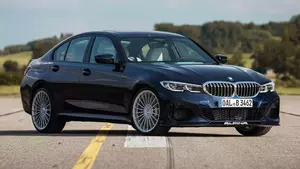
2020 B3 Sedan (G20)
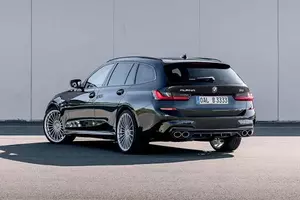
2020 B3 Touring (G21)

2015 B3 Touring (F31 LCI, Facelift 2015)

2015 B3 (F30 LCI, Facelift 2015)
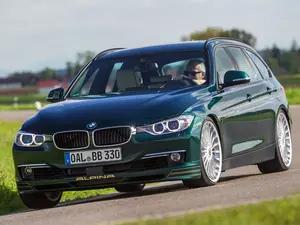
2013 B3 Touring (F31)
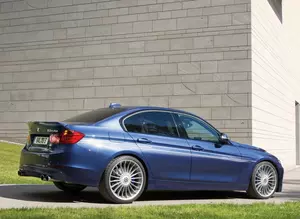
2013 B3 (F30)
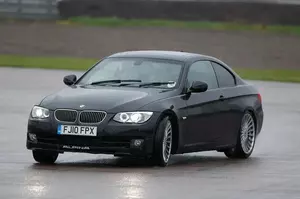
2007 B3 Coupe (E92)
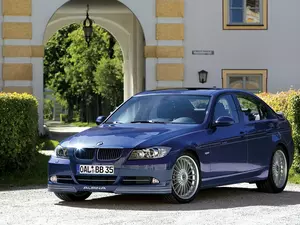
2007 B3 (E90)
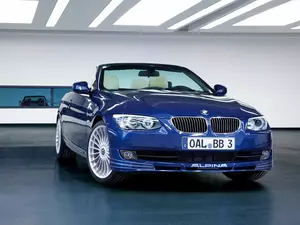
2007 B3 Cabrio (E93)
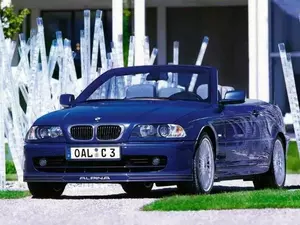
2000 B3 Cabrio (E46)

1999 B3 Coupe (E46)
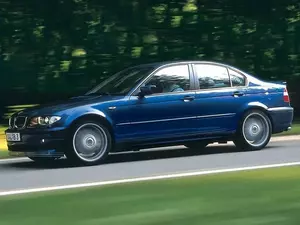
1999 B3 (E46)

1999 B3 Touring (E46)
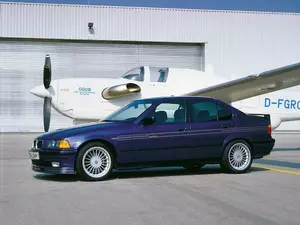
1993 B3 (E36)
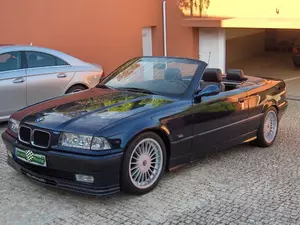
1993 B3 Cabrio (E36)
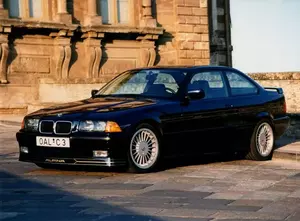
1993 B3 Coupe (E36)

| Vehicle | Curb weight | Difference from world's smallest | Weight to power ratio | 0—60 mph acceleration ratio | Consumption ratio |
|---|---|---|---|---|---|
| 3.0 |
1785 kg / 3936 lbs |
1360 kg (2999 lbs) heavier | 4 kg to 1 hp | 496 kg/s (1094 lbs/s) |
182 kg/L (401 lbs/L) |
| Vehicle | 3.0 |
|---|---|
| Curb weight |
1785 kg / 3936 lbs |
| Difference from world's smallest | 1360 kg (1360 lbs) heavier |
| Weight to power ratio | 4 kg to 1 hp |
| 0—60 mph acceleration ratio | 496 kg/s (1094 lbs/s) |
| Consumption ratio |
182 kg/L (401 lbs/L) |

| Vehicle | Curb weight | Difference from world's smallest | Weight to power ratio | 0—60 mph acceleration ratio | Consumption ratio |
|---|---|---|---|---|---|
| 3.0 |
1865 kg / 4112 lbs |
1440 kg (3175 lbs) heavier | 4 kg to 1 hp | - |
190 kg/L (419 lbs/L) |
| Vehicle | 3.0 |
|---|---|
| Curb weight |
1865 kg / 4112 lbs |
| Difference from world's smallest | 1440 kg (1440 lbs) heavier |
| Weight to power ratio | 4 kg to 1 hp |
| 0—60 mph acceleration ratio | - |
| Consumption ratio |
190 kg/L (419 lbs/L) |

| Vehicle | Curb weight | Difference from world's smallest | Weight to power ratio | 0—60 mph acceleration ratio | Consumption ratio |
|---|---|---|---|---|---|
| 3.0 |
1770 kg / 3903 lbs |
1345 kg (2966 lbs) heavier | 4 kg to 1 hp | 443 kg/s (977 lbs/s) |
221 kg/L (487 lbs/L) |
| S 3.0 |
1705 kg / 3760 lbs |
1280 kg (2823 lbs) heavier | 4 kg to 1 hp | 416 kg/s (917 lbs/s) |
210 kg/L (463 lbs/L) |
| Vehicle | 3.0 |
|---|---|
| Curb weight |
1770 kg / 3903 lbs |
| Difference from world's smallest | 1345 kg (1345 lbs) heavier |
| Weight to power ratio | 4 kg to 1 hp |
| 0—60 mph acceleration ratio | 443 kg/s (977 lbs/s) |
| Consumption ratio |
221 kg/L (487 lbs/L) |
| Vehicle | S 3.0 |
| Curb weight |
1705 kg / 3760 lbs |
| Difference from world's smallest | 1280 kg (1280 lbs) heavier |
| Weight to power ratio | 4 kg to 1 hp |
| 0—60 mph acceleration ratio | 416 kg/s (917 lbs/s) |
| Consumption ratio |
210 kg/L (463 lbs/L) |

| Vehicle | Curb weight | Difference from world's smallest | Weight to power ratio | 0—60 mph acceleration ratio | Consumption ratio |
|---|---|---|---|---|---|
| 3.0 |
1705 kg / 3760 lbs |
1280 kg (2823 lbs) heavier | 4 kg to 1 hp | 437 kg/s (964 lbs/s) |
216 kg/L (476 lbs/L) |
| S 3.0 |
1630 kg / 3594 lbs |
1205 kg (2657 lbs) heavier | 4 kg to 1 hp | 398 kg/s (878 lbs/s) |
206 kg/L (454 lbs/L) |
| Vehicle | 3.0 |
|---|---|
| Curb weight |
1705 kg / 3760 lbs |
| Difference from world's smallest | 1280 kg (1280 lbs) heavier |
| Weight to power ratio | 4 kg to 1 hp |
| 0—60 mph acceleration ratio | 437 kg/s (964 lbs/s) |
| Consumption ratio |
216 kg/L (476 lbs/L) |
| Vehicle | S 3.0 |
| Curb weight |
1630 kg / 3594 lbs |
| Difference from world's smallest | 1205 kg (1205 lbs) heavier |
| Weight to power ratio | 4 kg to 1 hp |
| 0—60 mph acceleration ratio | 398 kg/s (878 lbs/s) |
| Consumption ratio |
206 kg/L (454 lbs/L) |

| Vehicle | Curb weight | Difference from world's smallest | Weight to power ratio | 0—60 mph acceleration ratio | Consumption ratio |
|---|---|---|---|---|---|
| 3.0 |
1675 kg / 3693 lbs |
1250 kg (2756 lbs) heavier | 4 kg to 1 hp | 409 kg/s (902 lbs/s) |
218 kg/L (481 lbs/L) |
| Vehicle | 3.0 |
|---|---|
| Curb weight |
1675 kg / 3693 lbs |
| Difference from world's smallest | 1250 kg (1250 lbs) heavier |
| Weight to power ratio | 4 kg to 1 hp |
| 0—60 mph acceleration ratio | 409 kg/s (902 lbs/s) |
| Consumption ratio |
218 kg/L (481 lbs/L) |

| Vehicle | Curb weight | Difference from world's smallest | Weight to power ratio | 0—60 mph acceleration ratio | Consumption ratio |
|---|---|---|---|---|---|
| 3.0 |
1610 kg / 3550 lbs |
1185 kg (2613 lbs) heavier | 4 kg to 1 hp | 403 kg/s (889 lbs/s) |
212 kg/L (467 lbs/L) |
| Vehicle | 3.0 |
|---|---|
| Curb weight |
1610 kg / 3550 lbs |
| Difference from world's smallest | 1185 kg (1185 lbs) heavier |
| Weight to power ratio | 4 kg to 1 hp |
| 0—60 mph acceleration ratio | 403 kg/s (889 lbs/s) |
| Consumption ratio |
212 kg/L (467 lbs/L) |

| Vehicle | Curb weight | Difference from world's smallest | Weight to power ratio | 0—60 mph acceleration ratio | Consumption ratio |
|---|---|---|---|---|---|
| 3.0 |
1535 kg / 3385 lbs |
1110 kg (2448 lbs) heavier | 4 kg to 1 hp | 357 kg/s (787 lbs/s) |
160 kg/L (353 lbs/L) |
| Vehicle | 3.0 |
|---|---|
| Curb weight |
1535 kg / 3385 lbs |
| Difference from world's smallest | 1110 kg (1110 lbs) heavier |
| Weight to power ratio | 4 kg to 1 hp |
| 0—60 mph acceleration ratio | 357 kg/s (787 lbs/s) |
| Consumption ratio |
160 kg/L (353 lbs/L) |

| Vehicle | Curb weight | Difference from world's smallest | Weight to power ratio | 0—60 mph acceleration ratio | Consumption ratio |
|---|---|---|---|---|---|
| 3.0i Biturbo |
1645 kg / 3627 lbs |
1220 kg (2690 lbs) heavier | 5 kg to 1 hp | 358 kg/s (789 lbs/s) |
168 kg/L (370 lbs/L) |
| Vehicle | 3.0i Biturbo |
|---|---|
| Curb weight |
1645 kg / 3627 lbs |
| Difference from world's smallest | 1220 kg (1220 lbs) heavier |
| Weight to power ratio | 5 kg to 1 hp |
| 0—60 mph acceleration ratio | 358 kg/s (789 lbs/s) |
| Consumption ratio |
168 kg/L (370 lbs/L) |

| Vehicle | Curb weight | Difference from world's smallest | Weight to power ratio | 0—60 mph acceleration ratio | Consumption ratio |
|---|---|---|---|---|---|
| 3.0i Biturbo |
1845 kg / 4068 lbs |
1420 kg (3131 lbs) heavier | 5 kg to 1 hp | 384 kg/s (847 lbs/s) |
190 kg/L (419 lbs/L) |
| Vehicle | 3.0i Biturbo |
|---|---|
| Curb weight |
1845 kg / 4068 lbs |
| Difference from world's smallest | 1420 kg (1420 lbs) heavier |
| Weight to power ratio | 5 kg to 1 hp |
| 0—60 mph acceleration ratio | 384 kg/s (847 lbs/s) |
| Consumption ratio |
190 kg/L (419 lbs/L) |

| Vehicle | Curb weight | Difference from world's smallest | Weight to power ratio | 0—60 mph acceleration ratio | Consumption ratio |
|---|---|---|---|---|---|
| 3.3 i 24V B3S |
1620 kg / 3572 lbs |
1195 kg (2635 lbs) heavier | 5 kg to 1 hp | 295 kg/s (650 lbs/s) |
146 kg/L (322 lbs/L) |
| 3.3 i 24V |
1620 kg / 3572 lbs |
1195 kg (2635 lbs) heavier | 6 kg to 1 hp | 279 kg/s (615 lbs/s) |
142 kg/L (313 lbs/L) |
| Vehicle | 3.3 i 24V B3S |
|---|---|
| Curb weight |
1620 kg / 3572 lbs |
| Difference from world's smallest | 1195 kg (1195 lbs) heavier |
| Weight to power ratio | 5 kg to 1 hp |
| 0—60 mph acceleration ratio | 295 kg/s (650 lbs/s) |
| Consumption ratio |
146 kg/L (322 lbs/L) |
| Vehicle | 3.3 i 24V |
| Curb weight |
1620 kg / 3572 lbs |
| Difference from world's smallest | 1195 kg (1195 lbs) heavier |
| Weight to power ratio | 6 kg to 1 hp |
| 0—60 mph acceleration ratio | 279 kg/s (615 lbs/s) |
| Consumption ratio |
142 kg/L (313 lbs/L) |

| Vehicle | Curb weight | Difference from world's smallest | Weight to power ratio | 0—60 mph acceleration ratio | Consumption ratio |
|---|---|---|---|---|---|
| 3.3 i 24V |
1450 kg / 3197 lbs |
1025 kg (2260 lbs) heavier | 5 kg to 1 hp | 269 kg/s (593 lbs/s) |
134 kg/L (295 lbs/L) |
| 3.3 i 24V B3S |
1620 kg / 3572 lbs |
1195 kg (2635 lbs) heavier | 5 kg to 1 hp | 318 kg/s (701 lbs/s) |
149 kg/L (329 lbs/L) |
| Vehicle | 3.3 i 24V |
|---|---|
| Curb weight |
1450 kg / 3197 lbs |
| Difference from world's smallest | 1025 kg (1025 lbs) heavier |
| Weight to power ratio | 5 kg to 1 hp |
| 0—60 mph acceleration ratio | 269 kg/s (593 lbs/s) |
| Consumption ratio |
134 kg/L (295 lbs/L) |
| Vehicle | 3.3 i 24V B3S |
| Curb weight |
1620 kg / 3572 lbs |
| Difference from world's smallest | 1195 kg (1195 lbs) heavier |
| Weight to power ratio | 5 kg to 1 hp |
| 0—60 mph acceleration ratio | 318 kg/s (701 lbs/s) |
| Consumption ratio |
149 kg/L (329 lbs/L) |

| Vehicle | Curb weight | Difference from world's smallest | Weight to power ratio | 0—60 mph acceleration ratio | Consumption ratio |
|---|---|---|---|---|---|
| 3.3 i 24V |
1450 kg / 3197 lbs |
1025 kg (2260 lbs) heavier | 5 kg to 1 hp | 269 kg/s (593 lbs/s) |
134 kg/L (295 lbs/L) |
| 3.3 i 24V B3S |
1450 kg / 3197 lbs |
1025 kg (2260 lbs) heavier | 5 kg to 1 hp | 284 kg/s (626 lbs/s) |
133 kg/L (293 lbs/L) |
| 3.3 i 24V Switchtronic Allrad |
1560 kg / 3440 lbs |
1135 kg (2503 lbs) heavier | 6 kg to 1 hp | 236 kg/s (520 lbs/s) |
134 kg/L (295 lbs/L) |
| Vehicle | 3.3 i 24V |
|---|---|
| Curb weight |
1450 kg / 3197 lbs |
| Difference from world's smallest | 1025 kg (1025 lbs) heavier |
| Weight to power ratio | 5 kg to 1 hp |
| 0—60 mph acceleration ratio | 269 kg/s (593 lbs/s) |
| Consumption ratio |
134 kg/L (295 lbs/L) |
| Vehicle | 3.3 i 24V B3S |
| Curb weight |
1450 kg / 3197 lbs |
| Difference from world's smallest | 1025 kg (1025 lbs) heavier |
| Weight to power ratio | 5 kg to 1 hp |
| 0—60 mph acceleration ratio | 284 kg/s (626 lbs/s) |
| Consumption ratio |
133 kg/L (293 lbs/L) |
| Vehicle | 3.3 i 24V Switchtronic Allrad |
| Curb weight |
1560 kg / 3440 lbs |
| Difference from world's smallest | 1135 kg (1135 lbs) heavier |
| Weight to power ratio | 6 kg to 1 hp |
| 0—60 mph acceleration ratio | 236 kg/s (520 lbs/s) |
| Consumption ratio |
134 kg/L (295 lbs/L) |

| Vehicle | Curb weight | Difference from world's smallest | Weight to power ratio | 0—60 mph acceleration ratio | Consumption ratio |
|---|---|---|---|---|---|
| 3.3 i 24V B3S |
1525 kg / 3363 lbs |
1100 kg (2426 lbs) heavier | 5 kg to 1 hp | 242 kg/s (534 lbs/s) |
129 kg/L (284 lbs/L) |
| 3.3 i 24V |
1620 kg / 3572 lbs |
1195 kg (2635 lbs) heavier | 6 kg to 1 hp | 279 kg/s (615 lbs/s) |
147 kg/L (324 lbs/L) |
| 3.3i 24V B3S |
1525 kg / 3363 lbs |
1100 kg (2426 lbs) heavier | 5 kg to 1 hp | 277 kg/s (611 lbs/s) |
137 kg/L (302 lbs/L) |
| 3.3 i 24V Switchtronic Allrad |
1630 kg / 3594 lbs |
1205 kg (2657 lbs) heavier | 6 kg to 1 hp | 240 kg/s (529 lbs/s) |
139 kg/L (306 lbs/L) |
| Vehicle | 3.3 i 24V B3S |
|---|---|
| Curb weight |
1525 kg / 3363 lbs |
| Difference from world's smallest | 1100 kg (1100 lbs) heavier |
| Weight to power ratio | 5 kg to 1 hp |
| 0—60 mph acceleration ratio | 242 kg/s (534 lbs/s) |
| Consumption ratio |
129 kg/L (284 lbs/L) |
| Vehicle | 3.3 i 24V |
| Curb weight |
1620 kg / 3572 lbs |
| Difference from world's smallest | 1195 kg (1195 lbs) heavier |
| Weight to power ratio | 6 kg to 1 hp |
| 0—60 mph acceleration ratio | 279 kg/s (615 lbs/s) |
| Consumption ratio |
147 kg/L (324 lbs/L) |
| Vehicle | 3.3i 24V B3S |
| Curb weight |
1525 kg / 3363 lbs |
| Difference from world's smallest | 1100 kg (1100 lbs) heavier |
| Weight to power ratio | 5 kg to 1 hp |
| 0—60 mph acceleration ratio | 277 kg/s (611 lbs/s) |
| Consumption ratio |
137 kg/L (302 lbs/L) |
| Vehicle | 3.3 i 24V Switchtronic Allrad |
| Curb weight |
1630 kg / 3594 lbs |
| Difference from world's smallest | 1205 kg (1205 lbs) heavier |
| Weight to power ratio | 6 kg to 1 hp |
| 0—60 mph acceleration ratio | 240 kg/s (529 lbs/s) |
| Consumption ratio |
139 kg/L (306 lbs/L) |

| Vehicle | Curb weight | Difference from world's smallest | Weight to power ratio | 0—60 mph acceleration ratio | Consumption ratio |
|---|---|---|---|---|---|
| 3.2 i 24V |
1330 kg / 2933 lbs |
905 kg (1996 lbs) heavier | 5 kg to 1 hp | 238 kg/s (525 lbs/s) |
143 kg/L (315 lbs/L) |
| 3.0i 24V |
1330 kg / 2933 lbs |
905 kg (1996 lbs) heavier | 5 kg to 1 hp | 218 kg/s (481 lbs/s) | - |
| 3.0 i 24V |
1330 kg / 2933 lbs |
905 kg (1996 lbs) heavier | 5 kg to 1 hp | 229 kg/s (505 lbs/s) |
141 kg/L (311 lbs/L) |
| Vehicle | 3.2 i 24V |
|---|---|
| Curb weight |
1330 kg / 2933 lbs |
| Difference from world's smallest | 905 kg (905 lbs) heavier |
| Weight to power ratio | 5 kg to 1 hp |
| 0—60 mph acceleration ratio | 238 kg/s (525 lbs/s) |
| Consumption ratio |
143 kg/L (315 lbs/L) |
| Vehicle | 3.0i 24V |
| Curb weight |
1330 kg / 2933 lbs |
| Difference from world's smallest | 905 kg (905 lbs) heavier |
| Weight to power ratio | 5 kg to 1 hp |
| 0—60 mph acceleration ratio | 218 kg/s (481 lbs/s) |
| Consumption ratio | - |
| Vehicle | 3.0 i 24V |
| Curb weight |
1330 kg / 2933 lbs |
| Difference from world's smallest | 905 kg (905 lbs) heavier |
| Weight to power ratio | 5 kg to 1 hp |
| 0—60 mph acceleration ratio | 229 kg/s (505 lbs/s) |
| Consumption ratio |
141 kg/L (311 lbs/L) |

| Vehicle | Curb weight | Difference from world's smallest | Weight to power ratio | 0—60 mph acceleration ratio | Consumption ratio |
|---|---|---|---|---|---|
| 3.0i 24V |
1450 kg / 3197 lbs |
1025 kg (2260 lbs) heavier | 6 kg to 1 hp | 223 kg/s (492 lbs/s) |
149 kg/L (329 lbs/L) |
| Vehicle | 3.0i 24V |
|---|---|
| Curb weight |
1450 kg / 3197 lbs |
| Difference from world's smallest | 1025 kg (1025 lbs) heavier |
| Weight to power ratio | 6 kg to 1 hp |
| 0—60 mph acceleration ratio | 223 kg/s (492 lbs/s) |
| Consumption ratio |
149 kg/L (329 lbs/L) |

| Vehicle | Curb weight | Difference from world's smallest | Weight to power ratio | 0—60 mph acceleration ratio | Consumption ratio |
|---|---|---|---|---|---|
| 3.0i 24V |
1330 kg / 2933 lbs |
905 kg (1996 lbs) heavier | 5 kg to 1 hp | 229 kg/s (505 lbs/s) |
141 kg/L (311 lbs/L) |
| Vehicle | 3.0i 24V |
|---|---|
| Curb weight |
1330 kg / 2933 lbs |
| Difference from world's smallest | 905 kg (905 lbs) heavier |
| Weight to power ratio | 5 kg to 1 hp |
| 0—60 mph acceleration ratio | 229 kg/s (505 lbs/s) |
| Consumption ratio |
141 kg/L (311 lbs/L) |